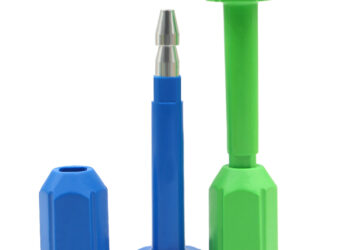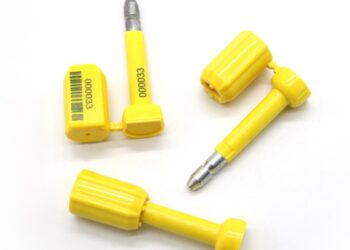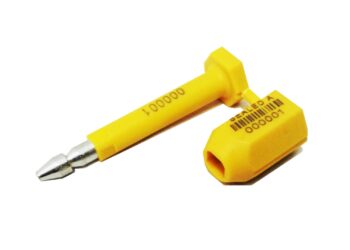ISO 17712 is an international standard that specifies requirements for mechanical seals used in containerized cargo transportation to help prevent tampering, theft, and unauthorized access to goods during transit. These seals provide evidence of tampering, aiding in the security and integrity of shipments across various modes of transportation, including trucks, ships, and trains. Let’s delve into how ISO 17712 requirements apply to each mode of transportation.
Trucks:
In the realm of truck transportation, ISO 17712 requirements play a crucial role in maintaining the security of cargo. High-security seals meeting the ISO 17712 standards must be used to secure containers and trailers during over-the-road transportation. These seals are designed to withstand tampering attempts, such as cutting, picking, and manipulation. The standard specifies the design, strength, and performance characteristics of these seals. Transport companies need to ensure that the seals are properly applied, documented, and tracked to ensure the chain of custody and security of the cargo.
Ships:
The maritime industry also adheres to ISO 17712 standards to safeguard containers during sea voyages. Shipping containers are sealed with high-security seals before being loaded onto vessels. These seals help prevent unauthorized access to the cargo and maintain its integrity throughout the journey. The ISO 17712 standard ensures that the seals used for maritime transportation are durable enough to withstand the harsh conditions of the open sea, including saltwater exposure and potential rough handling during loading and unloading. This is crucial for preventing both intentional tampering and accidental damage.
Trains:
ISO 17712 requirements extend to train transportation as well. Freight containers and railcars that carry cargo are often sealed using high-security seals. These seals are designed to deter theft and tampering during rail transport, ensuring that the cargo remains secure until it reaches its destination. The standard’s specifications ensure that the seals used in train transportation meet the necessary strength and tamper-evident features to withstand the unique challenges posed by rail operations.
Intermodal Transport:
In many cases, cargo is transported using a combination of these modes, known as intermodal transport. For instance, a shipment might begin its journey on a truck, then be transferred to a ship, and finally to a train. ISO 17712 requirements are critical in intermodal scenarios as they maintain the security of the cargo throughout these transitions. Ensuring that the seals are compatible with various modes of transportation helps prevent any potential vulnerabilities that might arise during transfers between different carriers.
Global Consistency:
ISO 17712 provides a globally recognized standard for container security, which is crucial in the international trade landscape. It ensures that containers and their contents are protected regardless of the geographical location and the mode of transportation used. This consistency in standards helps prevent security breaches and tampering attempts at various points along the supply chain.
Conclusion:
ISO 17712 requirements are essential across different modes of transportation, including trucks, ships, trains, and their combinations in intermodal transport. These requirements contribute to the security, integrity, and reliability of cargo shipments by providing standardized measures to prevent tampering, unauthorized access, and theft. Adhering to these standards not only safeguards the cargo but also bolsters the trust between parties involved in the supply chain, ultimately facilitating smooth and secure global trade.










